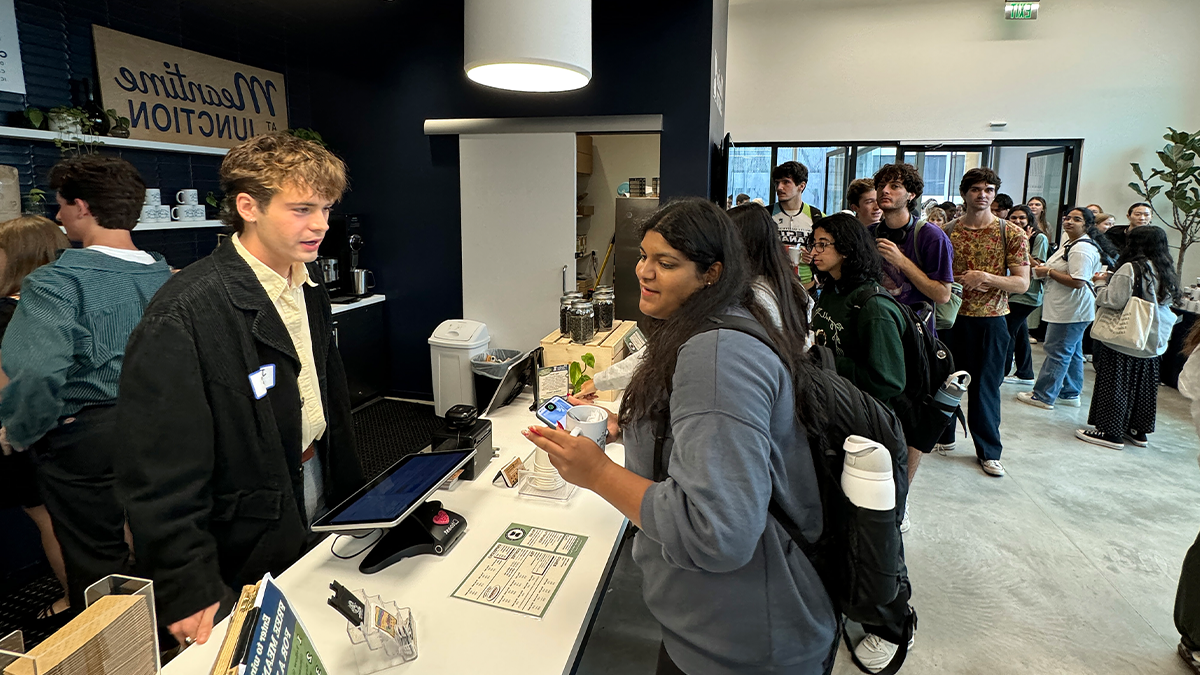Reducing overdoses is personal for Eshelman researcher
Grace Marley, who lost a brother to overdose, wants to make naloxone accessible and affordable.

Grace Marley is passionate about the opioid epidemic and helping pharmacists reduce overdose harm. Her brother’s death three years ago drives her desire to help others.
“I lost a brother to overdose three years ago. Since then, I’ve been trying to find opportunities to research and find new ways pharmacists can reduce that harm due to opioids and drugs in general,” said Marley ’23 (PharmD). She is a research assistant professor in the division of pharmaceutical outcomes and policy at the UNC Eshelman School of Pharmacy.
Opioid overdoses are a major public health concern in the U.S. and caused nearly 83,000 deaths in 2022. One of the ways to reduce harm is naloxone, a medication that acts quickly to reverse opioid overdoses and restore breathing.
“Naloxone saves lives,” said Marley, first author on a recently published paper in JAMA Health Forum that looked at how access to and the cost of the drug changed when it became available over the counter.

Transition to over the counter
Before it became available over the counter, naloxone was a prescription-only product.
In 2016, however, North Carolina implemented a statewide standing order authorizing pharmacists to dispense naloxone to patients without a prescription.
To increase access to naloxone nationally, the U.S. Food and Drug Administration approved Narcan, a nasal spray formulation of naloxone, for sale as an over-the-counter medication in March 2023. The product officially became available at pharmacies in September 2023.
Despite this effort, availability remained low due to not keeping it in-stock, the stigma surrounding addiction and overdose, lack of training and high cost.
Study on access, cost
The pharmacy school study took the novel approach of using secret shoppers to collect data and get the patient perspective of cost and availability. Trained individuals on the study team called community pharmacies across the state, posing as patients. They would follow a script to find out whether they could access Narcan that day and how much it would cost without insurance.
“After the introduction of an over-the-counter product, we found that the cost of naloxone decreased substantially, from $90 to $62 on average, which is exciting, but it is still out of reach for many patients,” Marley said.
The study also found that independent pharmacies were charging more than chain pharmacies and rural areas were more expensive than urban areas.
The most surprising thing for Marley throughout the study was discovering that there were some pharmacists who were not even aware of the status change of Narcan to an over-the-counter product, which may inspire another study.
The team is planning to use the data to create interactive maps for individuals to use and see where they can go to get naloxone across North Carolina.
This study is part of a $2.4 million grant from the National Institutes of Health to increase naloxone access across North Carolina. The grant was awarded in 2022 to Delesha Carpenter, executive vice chair and professor in the division and last author of the paper.
Carpenter notes that pharmacies are often important access points for naloxone, particularly in rural areas that do not have syringe service programs or other harm reduction organizations that distribute naloxone for free.







